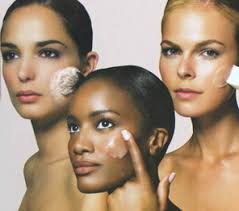Yes, we women come in all shapes and sizes. I was recently on a plane to Raleigh, North Carolina and there was a woman sitting beside me. She was close to my age, petite like me and she even had short hair like I do. However, there was one really obvious difference… unlike me, she had a slim hourglass figure with a well proportioned bust (or so I thought). I have to admit, at that moment… I was really jealous. We started chatting for a while about our businesses and then she got up to go to the bathroom. As she got up, she looked down at her chest and said, “I wish I could cut these off.” Wow! Was I surprised! Then I thought about it more and realized, that even a fuller bust can have its problems. If you want your bust to look smaller, stay away from small round necklines, fitted turtlenecks and choose the following instead:
- Lightweight fabrics that don’t cling
- V necks and open collars
- Clean simple bodices without pockets, ruffles or detailing near the bust area
- Darker coloured tops, sweaters and blouses
- Single breasted jackets
- Collars that draw attention away from the bust area
- A supporting bra






